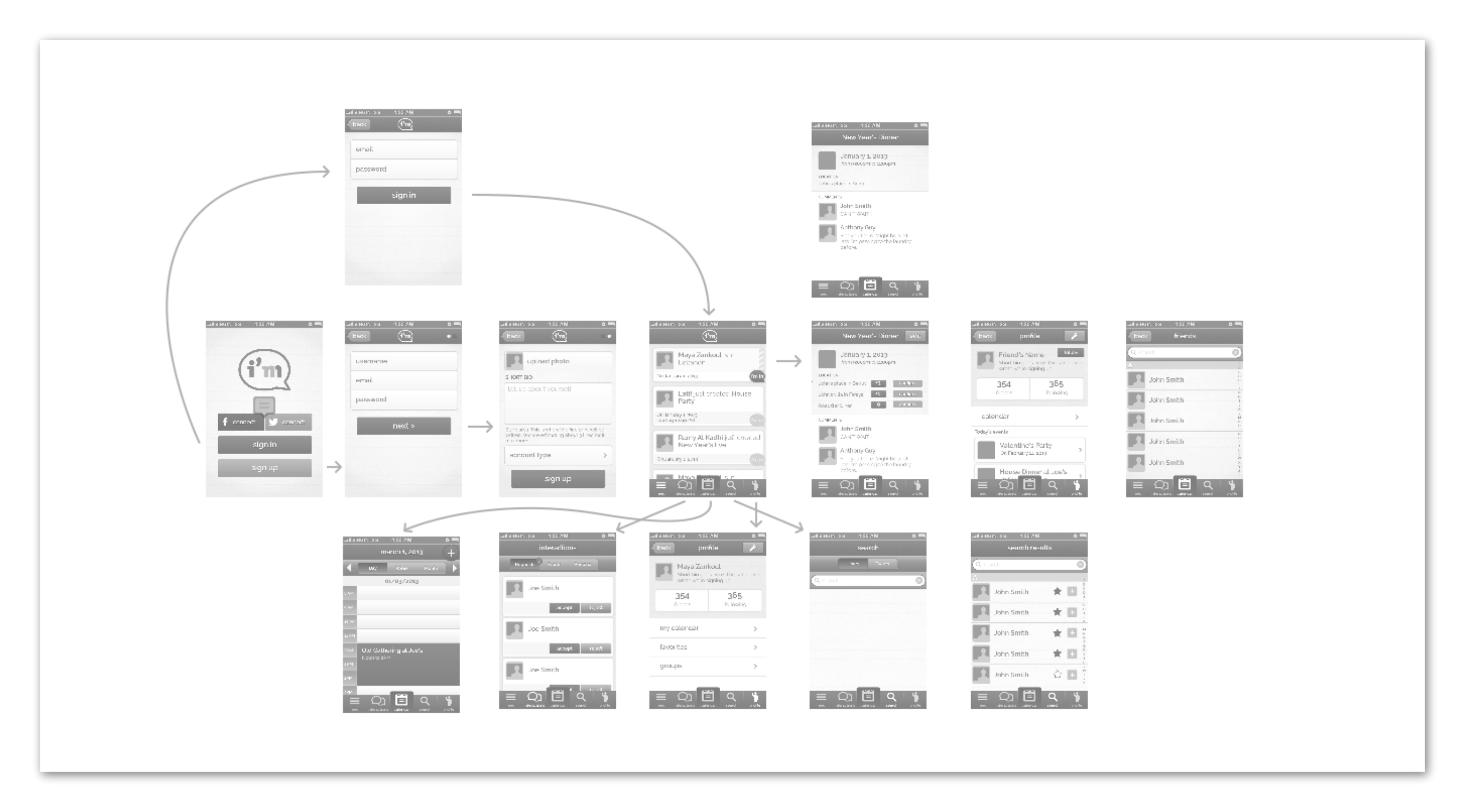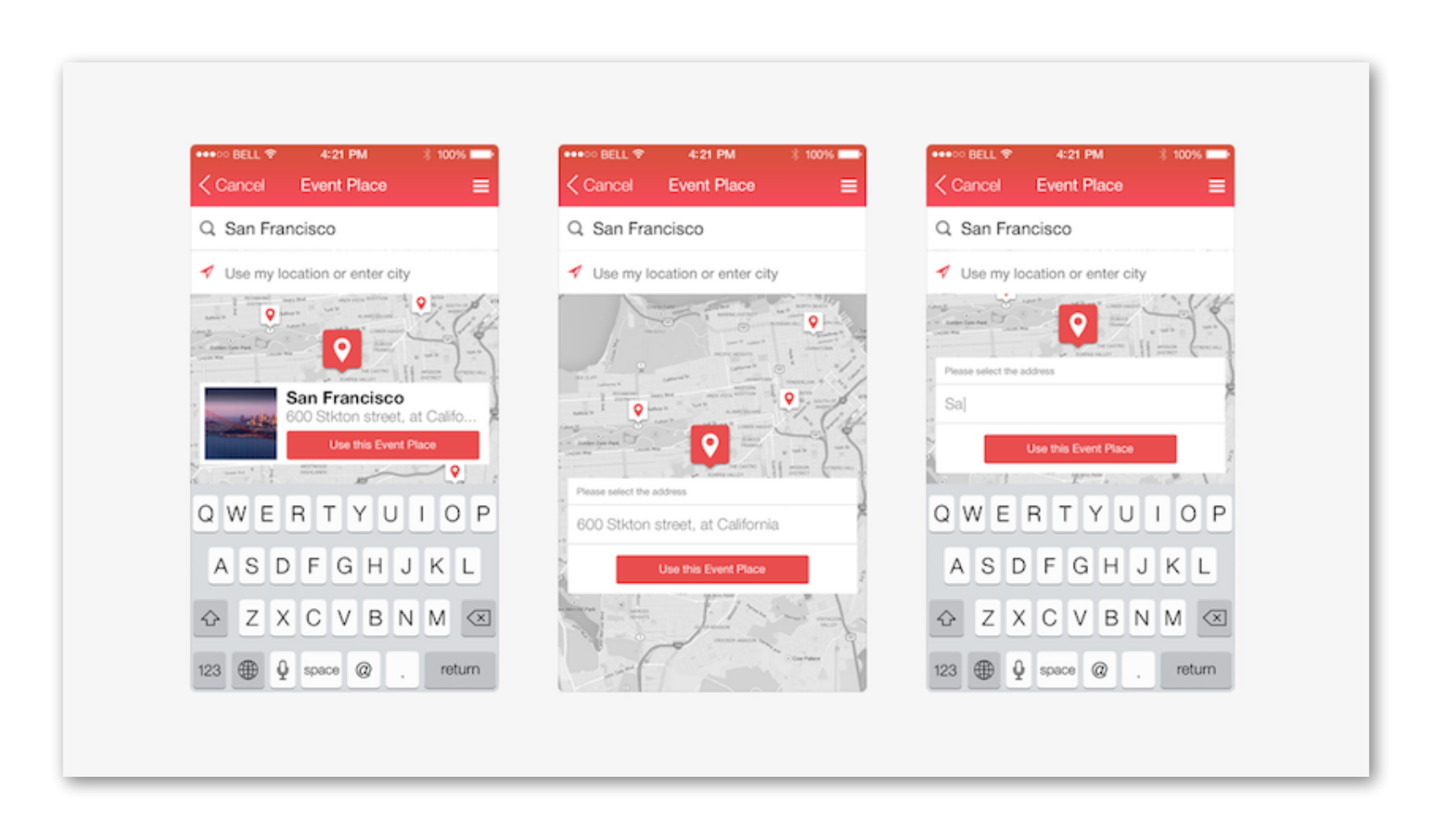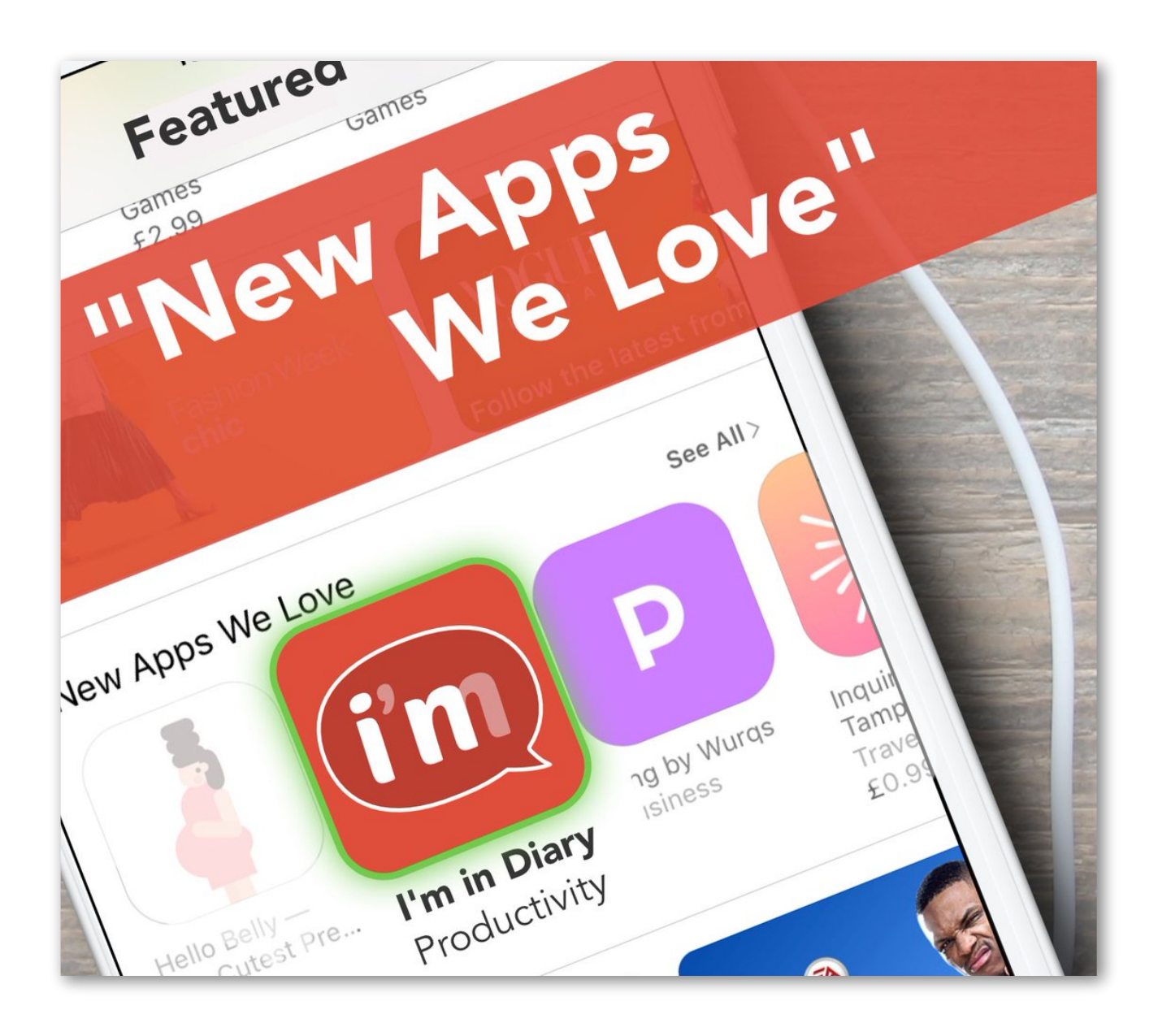What Happened
Two guys living between two cities: Dubai and London – Ramy Al Kadhi and Latif Baluch came up with an app idea and needed a design and development team to put together the product side of the startup.The founders felt that getting people together socially isn’t always easy; setting things up can be annoying and dreary. They also felt that most calendar and scheduling tools were quite basic and lacked innovation. The I’m in Diary app was supposed to ease the process and spice it up by means of a UI that would be simple, fun, and engaging. Sort of like social media apps that people use every day, but with a focus on on actually seeing each other.
Contents:
The goal was to launch a minimum viable iOS app based on an unconventional idea and see how it all plays out.
This was a genuine startup, as the co-founder and the information architect had no previous background in application development and basically wanted to make an app that he would enjoy, and subsequently, see if it makes a splash.

Not Another Calendar App
You might have an app idea, envision how it’ll work, and even have an investor sharing the same mindset. Where do you usually start? If you are a non-tech person, you would take some time to research the industry and get to know all the major principles of mobile development. You read case studies and avidly go through everything you can find about the app startups that inspire you. The rocky road to take would be copying someone’s path. Might actually work out, if you are lucky to only copy the good part. You can take into account all the experience in the world, but you have to build your own road in order to have the full control over your project.
Often times there is a staggering gap in understanding between the idea of an app and its actual outcome. What’s in the middle is the life and death of the project, the battles and the amazing discoveries, and most importantly, the soul of the product. Getting into the shared mindset mode that you and your investors have is not easy and it requires personal attachment to the endeavor. The next challenge after defining the discourse will be the implementation.
Identifying the tech team to bring your project to life is vital.
We consider our company to be a grassroots studio, even though we’ve outgrown ourselves from it to become an international digital agency, so we have a long history of thriving in startups.
In case with the I’m in Diary startup, a co-founder, Latif Baluch spent around $60 000 on the entire product. However, at the start there was almost no budget, the owners scraped up $20 000 to get going. The goal was to build an MVP within the least purse. As we progressed, Latif and Ramy managed to save and earn money for the project elsewhere which shows the level of belief and dedication they had in the app. As the app was right away positioned as a totally free application so there was no ecommerce or anything to monetize from. This enabled us to leverage the performance and usability of the app.

App UI/UX Design
Mid 2016, after we agreed upon terms, the intensive work started. The product owner and founder had a passion for graphic design and a lot of ideas originated from his side. Technically, the app was designed, but it required massive improvements, so we suggested to redesign the whole thing. This was done not for the sake of increasing the check, but for the sake of consistency and further savings on readjustments. The app design budget was about $5 000 and our main concern was designing the UX. The calendar app was such a beat up concept, so the client wanted to spice it up with interaction. Things that can help with that:
- Chats.
- Social media integration.
- Friendly UI.
- Viral triggers.
The design process in collaboration is at times challenging due to the cultural differences, but all the makeovers and iterations lead to the refinement of the app’s functionality, and the outcome is one – a better prototype.

App Development
A fairly fast, yet complex process after the design has been settled is actually building the app. Part of an application’s functionality can always be delegated to the third-party services and APIs, like all things geolocation and venues, are nicely handled by the Foursquare API.
Besides that, the development check of $23 000 included the following work:
- Native iOS app development.
- Ruby on Rails back-end development.
- Custom CMS (content management system).
Performance is the key requirement for a mobile app to go viral. Speed, convenience, and usefulness are the parts we specifically wanted to leverage in order to make the app appealing (NPI). Luckily, we’ve accumulated enough iOS application building experience. From the old days of slower devices and restrictions to today’s iPhones and iPads which seem like starships, to know exactly how to leverage performance.

There’s a reason why the invisible work is sometimes more significant than the obvious part. It takes at least two weeks to test an average app, including beta testing. In our case, it took significantly less and cost about $2 000 as we only engaged QA engineers for the milestone implementations.
We associate this with the fact that the emphasis was made on user testing. The owners insisted on getting as much user feedback as possible. This is a risky road to take for startups as you might get buried under the mound of miscellaneous criticism. Somehow they managed to fish out some of the most valuable points out of it, make changes according to the feedback, and save a lot of time/money for the future. Lastly, their sole focus became building something that people actually wanted.
Launching the MVP
Let’s say, the proverbial launch is more than just deploying the application on servers. For startups especially. After all the work done, it has to make a splash to be noticed. That alone is a marketing challenge and we’ll leave it for another article. Luckily, Apple holds its standards high for the ‘featured” section. I’m in Diary did make it to the ‘New Apps We Love’ featured category on the App Store days into the release.
“Their feedback was that the design and quality of the app were at quite a high standard for a new player.”
Says Latif in his Clutch.co interview. This was a huge feather in a cap of the executives along with the technical workshop that we sat for in this project. If you think about fund-raising, what can speak louder for your product than the appreciation of the app Mecca?

Learning Curve
Part of the first startup charm is the way it changes as the project progresses. Sometimes the previous arrangements as to the implementation of various features get thrown out of the window due to the lucky discoveries and serendipities of the project owners along with the valuable user feedback. This is by no means a reproach, as the reasoning is always for the sake of a better product. We totally dig it, but at times this consumes more resource than it was initially estimated.
Quoting Latif Baluch on the TechTalk Show podcast,
“The first year and a half I just made a mess of it, made a lot of mistakes.”
In case with I’m in Diary, these iterations cost the owners a considerable amount of time and money, but it’s all part of the game of unveiling the essence of the product, so what at first might look like running in circles is actually putting on the mileage of first-hand experience and expertise. Like any worthy venture, an app startup requires full-time engagement. Once I’m in Diary became Latif’s full-time priority, things went way faster. Along the way, we managed to build better communication and discipline. The owners switched from experimental mode to a tech savvy one with better judgment and focus. This is how startups turn into IPOs. The gap between the initially estimated check we charged for was $55 000. But it was followed through. Signed, sealed, and delivered.
Takeaway
Six months into the release, the app was picked up by four investors with an intent to expand the app features, bring it the Android users, and redefine the social paradox solution. The project worth grew from $60 000 to $175 000, presenting a new field of operation for our company as well as the satisfying fruits of labor for the guys who ventured everything into their startup. However, they perceived the first success as an opportunity to take I’m in Diary to the next level. They hired two new employees and moved into a real office (before Latif did work from his home for 10 months to save on office space) gearing up for the upcoming work.
One of the most important common things we keep finding in our most successful project is you can’t half-steam it. The level of commitment it requires is at times counter intuitive to the idea of a startup in the first place.
Something that has to help you get out of a nine-to-five job might actually catch you off guard with the workload you have to put in.
What’s important is have someone with a vision of the journey, final say, and business experience/intuition. Not to mention work ethic, eye for professionals, and the guts to endure all the risks and pitfalls of the market.
Our commitment to the project, open mind, and genuine urge to make the best out of it, along with the mutual patience and trust enabled us to hit the bull’s eye with this startup. Up next is the I’m in Diary 2.0 or the rebranded and renamed app opening a new chapter.
